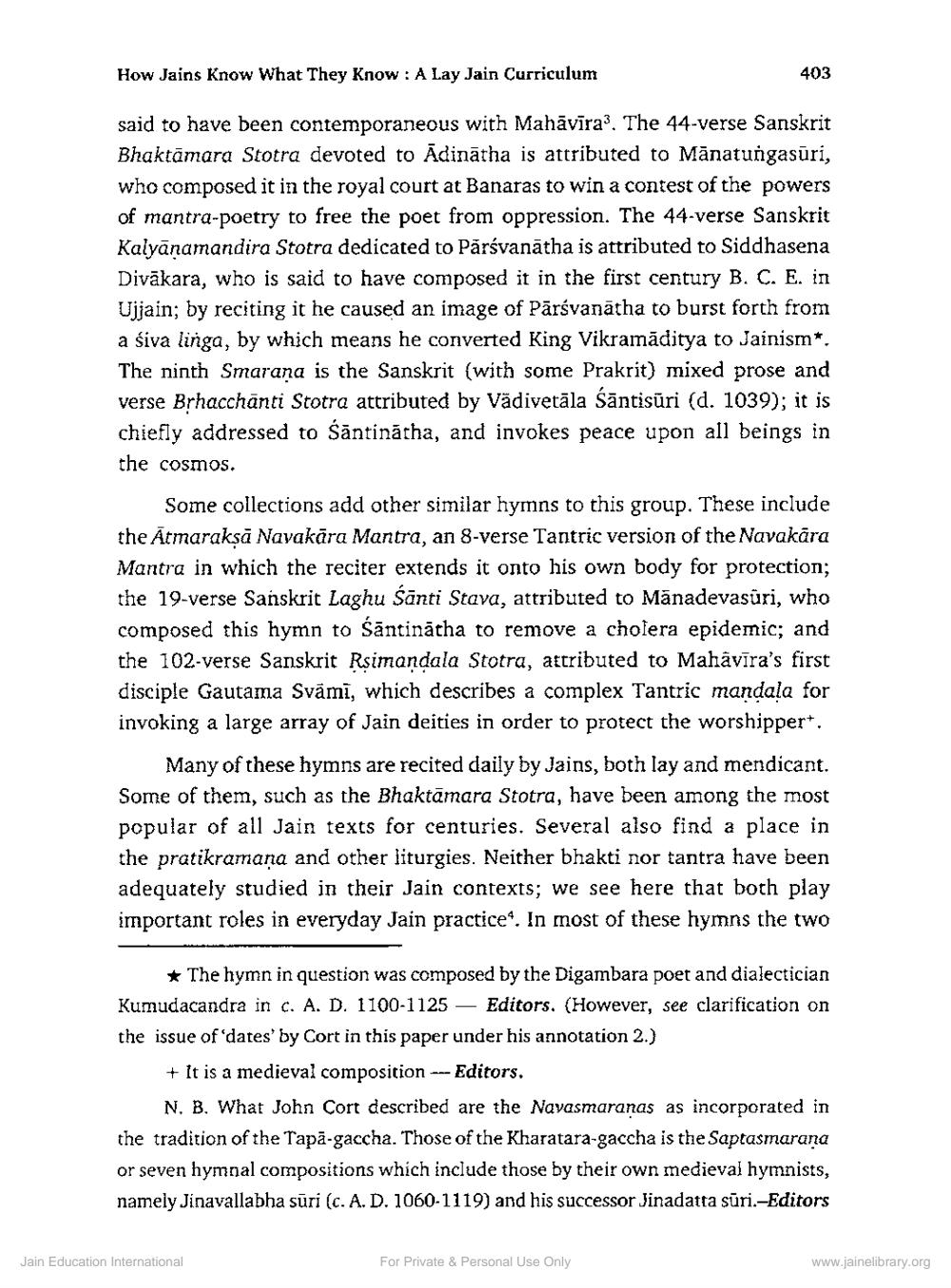Book Title: How Jains Know What They Know A Lay Jain Curriculum Author(s): John E Cort Publisher: Z_Nirgranth_Aetihasik_Lekh_Samucchay_Part_1_002105.pdf and Nirgranth_Aetihasik_Lekh_Samucchay_Part_2 View full book textPage 5
________________ How Jains Know What They Know: A Lay Jain Curriculum said to have been contemporaneous with Mahāvīra3. The 44-verse Sanskrit Bhaktamara Stotra devoted to Adinatha is attributed to Manatungasūri, who composed it in the royal court at Banaras to win a contest of the powers of mantra-poetry to free the poet from oppression. The 44-verse Sanskrit Kalyanamandira Stotra dedicated to Pārśvanatha is attributed to Siddhasena Diväkara, who is said to have composed it in the first century B. C. E. in Ujjain; by reciting it he caused an image of Pärśvanätha to burst forth from a siva linga, by which means he converted King Vikramaditya to Jainism*. The ninth Smarana is the Sanskrit (with some Prakrit) mixed prose and verse Bṛhacchanti Stotra attributed by Vädivetäla Säntisüri (d. 1039); it is chiefly addressed to Santinātha, and invokes peace upon all beings in the cosmos. 403 Some collections add other similar hymns to this group. These include the Atmarakṣa Navakära Mantra, an 8-verse Tantric version of the Navakara Mantra in which the reciter extends it onto his own body for protection; the 19-verse Sanskrit Laghu Śänti Stava, attributed to Manadevasūri, who composed this hymn to Santinātha to remove a cholera epidemic; and the 102-verse Sanskrit Rsimandala Stotra, attributed to Mahavira's first disciple Gautama Svami, which describes a complex Tantric mandala for invoking a large array of Jain deities in order to protect the worshipper*. Many of these hymns are recited daily by Jains, both lay and mendicant. Some of them, such as the Bhaktamara Stotra, have been among the most popular of all Jain texts for centuries. Several also find a place in the pratikramana and other liturgies. Neither bhakti nor tantra have been adequately studied in their Jain contexts; we see here that both play important roles in everyday Jain practice". In most of these hymns the two The hymn in question was composed by the Digambara poet and dialectician Kumudacandra in c. A. D. 1100-1125 Editors. (However, see clarification on the issue of 'dates' by Cort in this paper under his annotation 2.) + It is a medieval composition --- Editors. N. B. What John Cort described are the Navasmaranas as incorporated in the tradition of the Tapa-gaccha. Those of the Kharatara-gaccha is the Saptasmarana or seven hymnal compositions which include those by their own medieval hymnists, namely Jinavallabha sūri (c. A. D. 1060-1119) and his successor Jinadatta sūri.-Editors Jain Education International For Private & Personal Use Only www.jainelibrary.orgPage Navigation
1 ... 3 4 5 6 7 8 9 10 11 12 13 14 15
